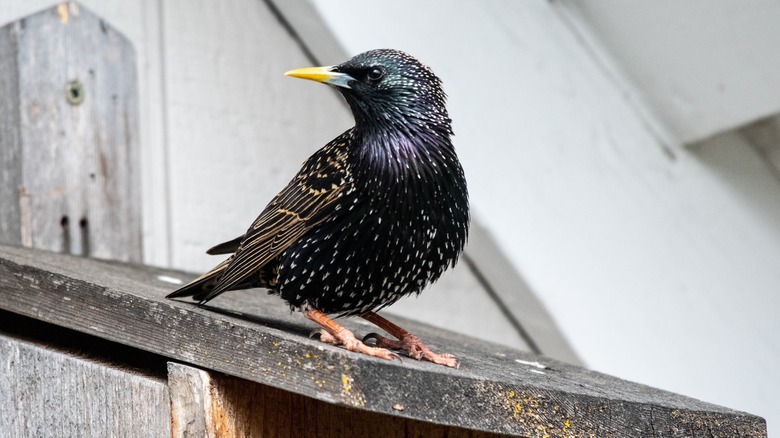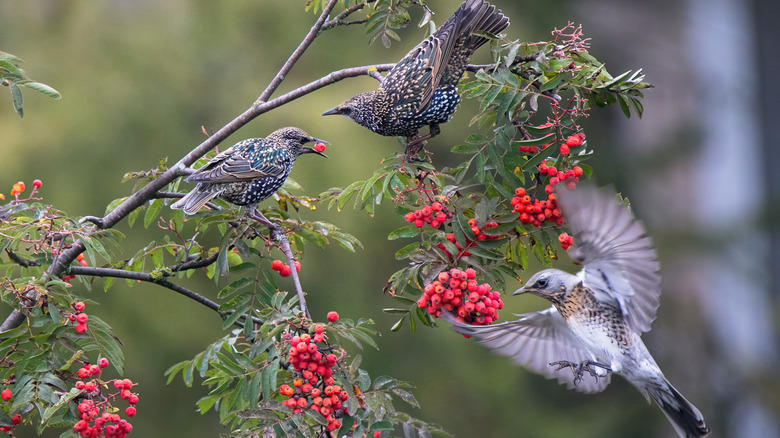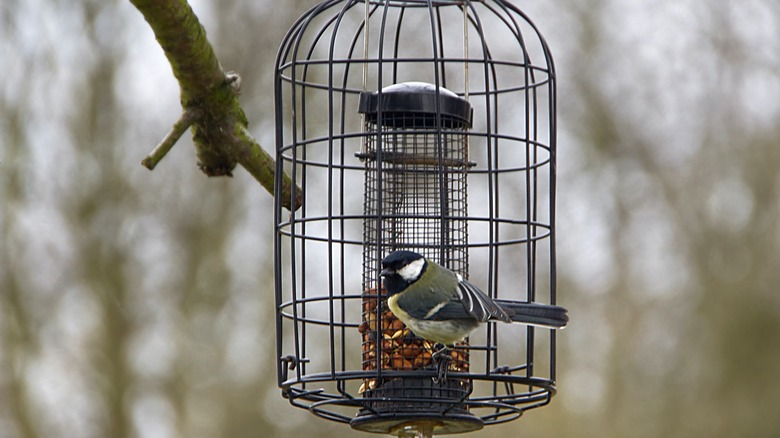The European Starling Isn't A Bird Breed You'll Want In Your Back Yard - Here's Why
European starlings may catch your eye with their iridescent feathers and captivating aerial displays. However, their introduction to North America in the late 19th century has caused numerous challenges due to their invasive nature. They compete intensely for nesting sites, displace native bird species, cause agricultural damage, and pose health concerns for animals and humans.
It might sound harsh to dislike a type of bird, but European starlings are considered undesirable backyard visitors due to their rapid reproduction and competitive behavior, which can disrupt the balance of local bird populations. Thankfully, there are effective and humane measures you can take to deter starlings without inadvertently affecting the birds you want to visit your feeder. In order to create a welcoming environment for desired bird species, it's helpful to have a solid understanding of the behavior of European starlings. This can help you minimize the impact of these birds and protect the beauty of your outdoor areas.
The downsides of European starlings
While European starlings are beneficial when it comes to consuming harmful insects, they can also cause economic losses for farmers and frustration for home gardeners due to their appetite for crops and garden fruits. Their foraging habits can create a mess by tearing open garbage bags and scattering trash, adding to their unwelcome presence. In addition, starlings are known carriers of diseases such as avian influenza and salmonella, which can be transmitted through direct contact and contaminated surfaces, water, and food sources.
Another significant concern with starlings is the noise pollution they generate. When flocking together in large numbers, they produce a cacophony of chirps, squawks, and whistles that can disrupt the peaceful ambiance of your yard. Finally, the aggressive behavior of starlings can be a source of concern as they compete aggressively with other birds for nest sites and food, potentially displacing native bird species.
Keeping European starlings at bay
Keeping European starlings out of your yard requires a combination of strategies. For instance, you can try using a feeder that's harder for them to access, such as caged or clinging feeders designed to accommodate smaller native bird species. You can also use seed blends that they don't like, such as those with safflower seeds.
Another thing to consider is where they might nest. Starlings like nooks and crannies, so try sealing off potential spots like gaps in buildings or chimneys. You can also set up nest boxes designed to deter starlings and attract native bird species instead. The birds are sensitive to sudden loud noises and unpredictable movement, so you can also incorporate wind chimes or reflective tape to make them uncomfortable. Finally, starlings like to roost in groups, so try to make your yard less appealing. Prune tree branches where they might hang out and use bird spikes on flat surfaces.


